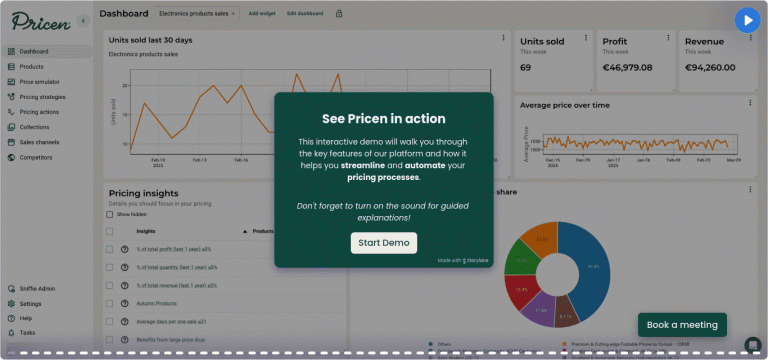Back-to-school isn’t just another seasonal blip on the retail calendar: it’s one of the year’s biggest opportunities for retailers to boost sales and margins.
And while economic headwinds are real, the spending is still happening. Indeed, back-to-school spending is projected to top $200 billion globally in 2025.
But shoppers in 2025 are more calculated than ever. They’re starting earlier, researching harder, and zeroing in on real value. If your pricing strategy is stuck in 2019, you’re basically handing over revenue (and long-term loyalty) to your competitors.
So let’s get into it. Here are five simple, practical pricing strategies retailers can lean on right now to crush the back-to-school season.
1. Time your promotions to local peaks
School start dates vary widely by region, sometimes even within the same country. Some students are back in classrooms by late July, while others don’t start until mid-September. This creates rolling demand peaks, not a single uniform surge.
If your strategy is just a single blanket promo, you risk either discounting too early or missing local peaks altogether. Instead:
- Use local sales history and school calendars to time campaigns by region.
- Let dynamic pricing tools trigger store-level or online markdowns automatically as local demand heats up.
That way, you capture demand exactly when it’s rising, without over-discounting in areas where shoppers aren’t ready yet.
Take a spin of Pricen with our quick, informative and fun demo.

2. Price essentials and discretionary goods differently
Think about it this way:
- Essentials (books, notebooks, pencils, folders) are non-negotiable. Parents will buy them, though they’ll still hunt for the best deal.
- Discretionary buys (branded backpacks, new trainers, or that new hoodie) are more flexible — shoppers might delay or trade down if it feels too expensive.
Many shoppers time discretionary back-to-school purchases around big sales events like Prime Day. Essentials, meanwhile, just keep moving.
The smart move?
- Keep essentials competitively priced to drive volume and traffic.
- Protect margins on discretionary items by bundling or offering tiered deals (think “buy two pairs of jeans, get 20% off”).
- Use pricing software to measure elasticity so you only discount where it actually moves the needle.
3. Capture both early birds and last-minute planners
The data tells a fascinating story. Shoppers are getting a head start:
- Nearly a fourth (25%) of parents have already started back-to-school shopping by June, up from around 14% last year.
- Many want to spread purchases over multiple paychecks or simply get ahead of potential price hikes.
Searches for “school supplies” start ramping up as early as May, with many shoppers eager to spread out spending. But plenty still wait for official school supply lists or local sales before finalizing purchases, often right up until term begins.
So it’s not about picking one group to target. You need to be ready for both:
- Early planners: Launch tiered promos like “Spend €50, get 10% off; spend €100, get 20% off” to grab planners and grow basket size.
- Last-minute shoppers: Hold back some sharp, targeted deals closer to local start dates — perfect for clearing slower-moving stock and grabbing the procrastinators.
Read our "Basics of Markdown Pricing" ebook
Whether you’re a small business owner or a seasoned retail professional, get the tools and knowledge you need to make informed markdown pricing decisions and enhance your profitability.

4. Keep your digital shelf prices in line
Today’s shoppers check store availability and prices online before deciding where to buy. They’re comparing prices on Google Shopping, marketplaces, and local price engines, some even long before they set foot in your store or hit your homepage.
That means if your online prices aren’t competitive on key categories (for instance stationery multipacks, kids’ backpacks, popular trainers…) you’re losing the basket before the shopper even seriously considers you.
Competitive pricing tools can monitor this constantly, automatically keeping your prices in line (or strategically undercutting where it makes sense), so you stay in the mix without unnecessarily gutting your margins.
5. Let real-time data drive markdown decisions
There’s always the temptation to dust off last year’s markdown plan. But shoppers in 2025 are behaving differently: they’re more price-sensitive, elasticity varies widely by category (and even by region), and local school calendars can shift buying patterns dramatically.
Rather than slash prices across the board on an arbitrary date:
- Track sell-through velocity by category and location. If backpacks are still flying off shelves, no need to discount early.
- Lean on elasticity models to pinpoint the smallest possible price tweak needed to unlock more volume — sometimes a 5% nudge is all it takes.
- Use AI-driven pricing to sync markdowns in real time, adjusting automatically as demand changes, instead of locking into an outdated calendar.
That way, you’re protecting profit while still capturing demand exactly when it peaks, not when last year’s plan says you should.
Bottom line
Back-to-school 2025 is shaping up to be a huge retail moment. The spending is there, but it’s only going to flow to retailers agile enough to price smarter, localize better, and respond in real time to demand.
At the same time, pricing alone isn’t the whole game. It’s the combination of sharp, data-driven pricing with strong product pages, great reviews, and an easy buying experience that ultimately wins over shoppers. Smart pricing gets you noticed and keeps your profits healthy, but the overall value you deliver is what seals the deal.
Curious how Pricen could boost your margins before peak season hits?
Let’s set up a quick demo.

